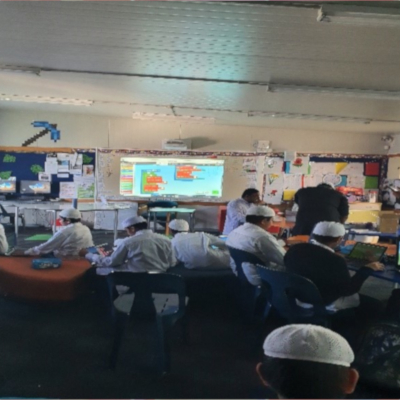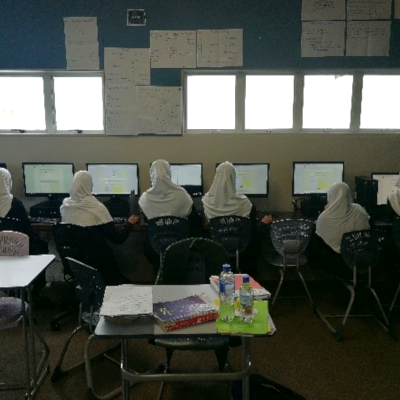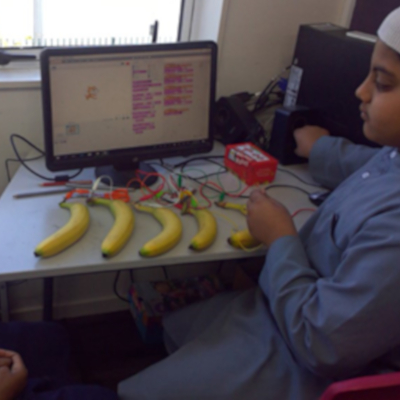Digital Technology

The focus of the Digital Technology is to integrate Computational Thinking and Designing and Developing Digital Outcomes in all curriculum areas.
According to the latest changes in Digital Technology Curriculum, the changes enables children to be taught how to design their own digital solutions and become creators of, not just users of, digital technologies, to prepare them for the modern workforce.” Latest revised Technology learning areas strengthen the positioning of digital technologies in The New Zealand Curriculum and Te Marautanga o Aotearoa. This is for all students from year 1–13. Students have the opportunity to specialise from year 11–13. The goal of this change is to ensure that all learners have the opportunity to become digitally capable individuals.
There are two strands in Digital Technology:
– Computational Thinking for Digital Technologies
– Designing and Developing Digital Outcomes (DDDO)
Computational Thinking for Digital Technologies
Computational thinking enables students to express problems and formulate solutions in ways that means a computer (an information processing agent) can be used to solve them.
In this area, students develop algorithmic thinking skills and an understanding of the computer science principles that underpin all digital technologies. They become aware of what is and isn’t possible with computing, allowing them to make judgments and informed decisions as citizens of the digital world.
Students learn core programming concepts and how to take advantage of the capabilities of computers, so that they can become creators of digital technologies, not just users. They develop an understanding of how computer data is stored, how all the information within a computer system is presented using digits, and the impact that different data representations have on the nature and use of this information.
Designing and Developing Digital Outcomes (DDDO)
In this area, students understand that digital applications and systems are created for humans by humans. They develop increasingly sophisticated understandings and skills for designing and producing quality, fit-for-purpose, digital outcomes. They develop their understanding of the technologies people need in order to locate, analyse, evaluate and present digital information efficiently, effectively and ethically.
Students become more expert in manipulating and combining data, using information management tools to create an outcome. They become aware of the unique intellectual property issues that arise in digital systems, particularly with approaches to copyright and patents. They also develop understandings of how to build, install, and maintain computers, networks and systems so that they are secure and efficient.
Students develop knowledge and skills in using different technologies to create digital content for the web, interactive digital platforms and print. They construct digital media outcomes that integrate media types and incorporate original content. They also learn how electronic components and techniques are used to design digital devices and integrated to assemble and test an electronic environment.
Digital Technology Studies
Primary
Years 1 and 6
Computational Thinking: Progress outcome 1
Students use their decomposition skills to break down simple non-computerised tasks into precise, unambiguous, step-by-step instructions (algorithmic thinking). In class, we have looked at algorithms from Connected Series.
Computational Thinking: Progress outcome 2
Students give, follow, and debug simple algorithms in computerised and non-computerised contexts. In class we have done Scratch Junior.
DDDO Progress outcome 1
Students participate in teacher-led activities to develop, manipulate, store, retrieve, and share digital content in order to meet technological challenges. In doing so, they identify digital devices and their purposes and understand that humans make them. In class we have designed a House That Dan Built from Connected Series.
DDDO Progress outcome 2
Students make decisions about creating, manipulating, storing, retrieving, sharing, and testing digital content for a specific purpose, given particular parameters, tools, and techniques. They understand that digital devices impact on humans and society and that both the devices and their impact change over time. In class, we have looked at Drones from Connected Series and Makey Makey.
Intermediate
Years 7 to 10
The two Digital Technology areas focus on developing students’ capability to create digital technologies for specific purposes. In years 7 to 8, these two areas are usually implemented within other curriculum learning areas, integrating technology outcomes with the learning area outcomes. These two areas also significantly contribute to students developing the knowledge and skills they need as digital citizens and as users of digital technologies across the curriculum. They also provide opportunities to further develop their key competencies.
By the end of year 10, students’ digital technological knowledge and skills enable them to follow a predetermined process to design, develop, store, test and evaluate digital content to address a given issue. Throughout this process, students take into account immediate social and end-user considerations. They can independently decompose a computational problem into an algorithm that they use to create a program incorporating inputs, outputs, sequence, selection and iteration. They understand the role of systems in managing digital devices, security and application software, and they are able to apply file management conventions using a range of storage devices.
Senior
NCEA level 1
Digital Technology
Pre-Requisite: None
Course content: The course consists of developing the following: a proposal for a digital outcome, a design for a digital outcome, a digital outcome to manage data, a digital media outcome, an electronics outcome, a computer system, Develop a computer program. They will also be using basic iterative processes to develop a digital outcome. Students will also demonstrate an understanding of searching and sorting algorithms, demonstrate understanding of human computer interaction and demonstrate understanding of compression coding for a chosen media type
https://www.nzqa.govt.nz/ncea/assessment/search.do?query=Digital+Technologies&view=all&level=01
NCEA level 2
Digital Technology
Pre-Requisite: Digital Technology Level 1
Course content: Students will conduct an inquiry to propose a digital technologies outcome, applying conventions to develop a design for a digital technologies outcome, use advanced techniques to develop a database, use advanced techniques to develop a digital media outcome, use advanced techniques to develop an electronics outcome, use advanced techniques to develop a network, use advanced programming techniques to develop a computer program, use advanced processes to develop a digital technologies outcome, demonstrate understanding of a computer science concept and present a summary of developing a digital outcome
https://www.nzqa.govt.nz/ncea/assessment/search.do?query=Digital+Technologies&view=all&level=02
NCEA level 3
Digital Technology
Pre-Requisite: Digital Technology Level 2
Course content: Students will conduct a critical inquiry to propose a digital technologies outcome, applying user experience methodologies to develop a design for a digital technologies outcome, using complex techniques to develop a database, using complex techniques to develop a digital media outcome, using complex techniques to develop an electronics outcome, using complex techniques to develop a network, using complex programming techniques to develop a computer program, using complex processes to develop a digital technologies outcome, analysing an area of computer science and presenting a reflective analysis of developing a digital outcome
https://www.nzqa.govt.nz/ncea/assessment/search.do?query=Digital+Technologies&view=all&level=03



